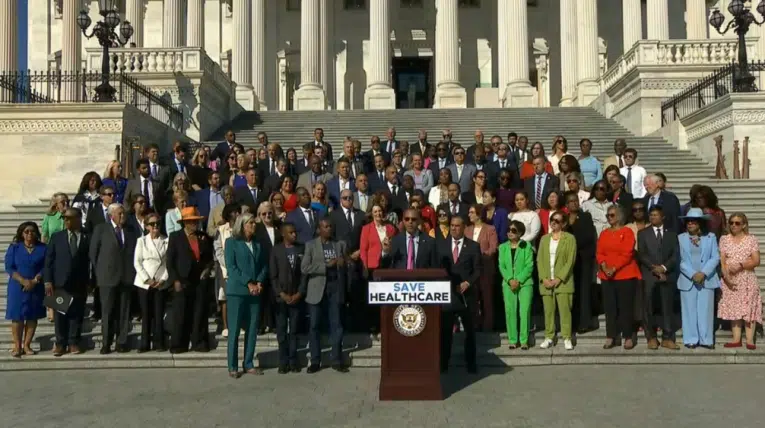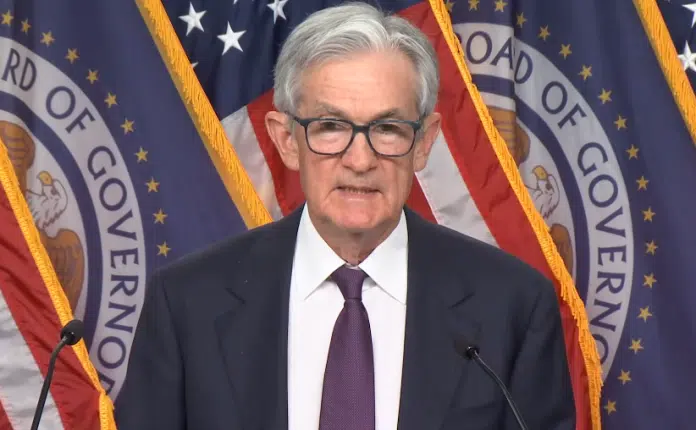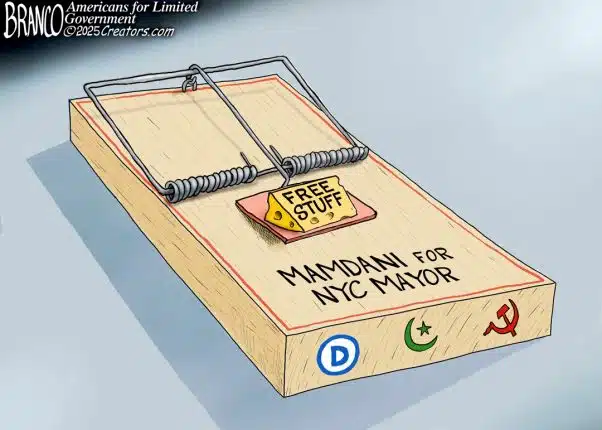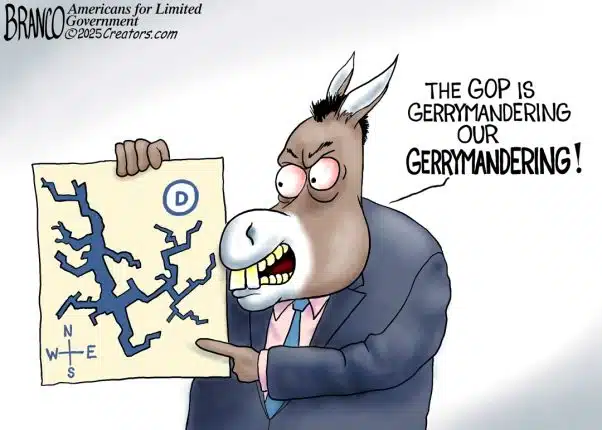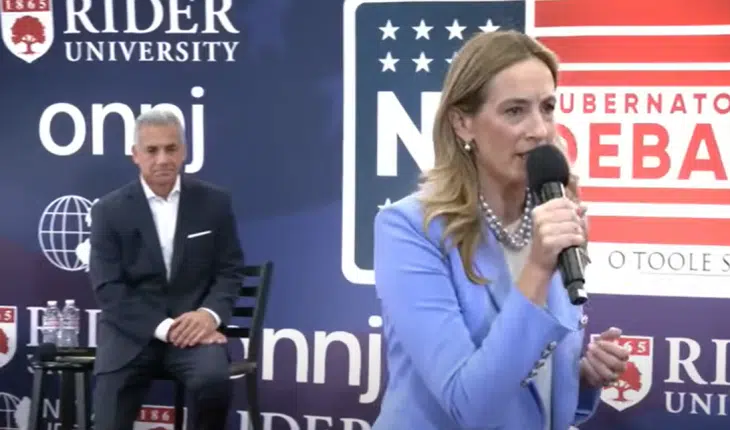By Bill Wilson — If one has been following the news lately, it probably has been impossible to miss a nascent radical protest movement in New York City dubbed “Occupy Wall Street.” On its face, it appears to be a typical leftist attempt to spark populist outrage against the supposed excesses of capitalism, and there may not be much more to it than that.
In short, it is an opportunity for youth to get out and vent against the weakened state of the economy, the financial crisis and the bailouts, and high unemployment — which the movement attributes to an amorphous Wall Street.
But, setting aside the circus-like atmosphere, as one delves slightly deeper into the group’s literature, the protestors have at least correctly identified some of the villains behind today’s depression: the international financial institutions.
This recognition was articulated by radical author Noam Chomsky, who voiced his support for the movement, writing, “Anyone with eyes open knows that the gangsterism of Wall Street — financial institutions generally — has caused severe damage to the people of the United States (and the world). And should also know that it has been doing so increasingly for over 30 years, as their power in the economy has radically increased, and with it their political power.”
Chomsky’s full statement drips with the use of Marxist language, but he has a point to make. Call it corporatism. Crony capitalism. Or corporate welfare. Whatever its label, there’s no question banks possess an uncanny ability to leverage political institutions whenever something goes wrong.
It is evidenced by the 2008 and 2009 bailouts of financial institutions all over the world — the Federal Reserve printed over $442.7 billion to bail out foreign institutions that bet poorly on U.S. housing — and by Europe’s ongoing rescue of creditors that lent money to socialist governments like Greece that could not afford to pay them back.
However, if the organizers of this movement were honest, they would realize that Wall Street’s investment banks are merely bit players in this sordid affair.
If they were truthful, they’d be organized outside the Eccles Building in Washington, D.C. that houses the Federal Reserve. The real problem lays with the nation’s central bank — and central banking institutions the world over.
In short, so long as banks can create money out of thin air through credit expansion — a process whereby institutions can lend and borrow multiples far beyond what they hold in capital, breeding obscene levels of leverage into the system (as much as $700 trillion in derivatives, according to the Bank of International Settlements) — the economy will continue to suffer this perpetual boom-to-bust cycle.
The protestors begin to scratch the surface with their demands, chief of which is the reinstatement of the Glass-Steagall Act, legislation that had separated depository, investment, and insurance companies during the Great Depression. The provisions were ostensibly in response to the credit bubble of the 1920’s, and designed to keep leverage out of the stock market.
The bill in part amended the Federal Reserve Act, adding a section that left to the Fed the “power to fix from time to time for each Federal reserve district the percentage of individual bank capital and surplus which may be represented by loans by stock or bond collateral made by member banks within such district… and it shall be the duty of the Board to establish such percentages with a view to preventing the undue use of bank loans for the speculative carrying of securities”.
By that time in history, as the Fed itself notes, the central bank had already come to a view that traditional reserve requirements were obsolete, and insufficient to protect a bank against a run on its assets. Instead, its view transformed, in 1931 arguing that reserves were better suited for facilitating the expansion of bank credit.
Somewhere along the line, the true fractional reserve system — which only lends based on deposits and reserves and does not create money — was abandoned. What was put in its place was a system of multiple leveraging, where literally every bank has its own printing press. It was eventually formalized internationally in the Basel capital accords of 1988.
Without such a leveraged system, Glass-Steagall’s prohibitions would never be necessary.
To be certain, the law’s provisions were gradually weakened over time by Congress and the Fed, as chronicled by the WGBH Educational Foundation’s Frontline. Starting in 1987, the Fed reinterpreted Glass-Steagall’s prohibition on commercial banks from being “engaged principally” in securities to mean that firms could carry 5 percent of gross revenues from investment banking. By the end of 1996, the Fed had expanded that to 25 percent of gross revenues.
The prohibition was altogether repealed in 1999 by the bipartisan Gramm-Leach-Bliley bill, which allowed commercial banks, investment firms, and insurance companies to merge, and importantly, to issue their own securities. But while this repeal certainly did play a role in inflating the credit bubble of the 2000’s, it does not tell the whole story.
The Glass-Steagall repeal almost did not occur. The hold-up? Concerns by the Clinton White House and congressional Democrats such as Senators Chuck Schumer and Chris Dodd over the Community Reinvestment Act (CRA), as chronicled by the New York Times. The White House “wanted the legislation to prevent any bank with an unsatisfactory record of making loans to the disadvantaged from expanding into new areas, like insurance or securities.”
In other words, Democrats were okay with rolling back Glass-Steagall, so long as it could ensure their low-income and minority lending programs would continue. And with the prospect of new bank mergers on the horizon, community groups like the National Housing Institute were busy outlining plans for using the impending mergers to leverage CRA commitments from the new megabanks.
In 2000, CRA loans totaled $135 billion, according a Department of Treasury report required by Gramm-Leach-Bliley. By 2007, CRA commitments from banks totaled $4.5 trillion, according to research by American Enterprise Institute’s Edward Pinto. This facilitated the production of 26.7 million non-traditional mortgages — like subprime and Alt-A — that helped wreck the economy when the housing bubble popped.
And while Wall Street investment houses had their hands in this market, it paled in comparison to Government Sponsored Enterprises (GSEs) Fannie Mae and Freddie Mac, the FHA, and other federal agencies, which owned or guaranteed 70 percent of these risky loans, according to Pinto’s research.
Pinto traced the housing bubble to federal government policies to foster home ownership to low-income Americans who, it turns out, could not afford the loans they were taking out. Specifically, it was HUD that imposed so-called “affordable housing goals” on Fannie and Freddie, which rose from 30 percent in 1993 to 56 percent by 2008. Also, the FHA helped to weaken lending standards, expanding government-held loans with down payments of 3 percent or less from $7 billion 1991 to over $174 billion in 2007, $160 billion of which were held by the GSEs.
By 2008, Fannie and Freddie held $1.835 trillion in higher-risk mortgages and mortgage-backed securities: $1.646 trillion, were GSE-issued mortgage-backed securities, and $189 billion of subprime and Alt-A private mortgage-backed securities, Also, because of the implicit backing of taxpayers, Pinto notes that the GSE-issued securities were automatically granted AAA bond ratings, and the GSEs were even able to misrepresent the quality of mortgages that underlined those securities.
This was made possible by congressional passage of the GSE Act of 1992, which established Fannie and Freddie’s capital requirements. Writes Pinto, “The GSEs only needed $900 in capital behind a $200,000 mortgage they guaranteed — many of which by 2004-2007 had no borrower downpayment. In order for private sector to compete with Fannie and Freddie, it needed to find ways to increase leverage.”
That’s where the repeal of Glass-Steagall came in.
Ultimately, however, it was the Fed that provided the liquidity needed to fuel the bubble, by keeping interest rates too low for too long, as noted by Stanford economist John Taylor.
So, while the repeal of Glass-Steagall certainly explains the creation of megabanks on Wall Street, enabling firms like Bear Stearns to become overleveraged by factors as much as 30 to 1, it does not account for most of the financial crisis that the government caused. It merely explains how they got in on the act.
The solution is to take the printing presses away from the banks and start the long march back to a strong, stable, secure currency. Until these things happen, the concentration of power and wealth in the “financial houses” — and the inevitable risks to the U.S. economy — will only multiply.
Bill Wilson is the President of Americans for Limited Government. You can follow Bill on Twitter at @BillWilsonALG.


